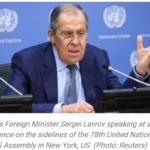In a decisive move, the US Commerce Department has recently unveiled its final regulations aimed at curtailing the utilization of semiconductor manufacturing subsidies by countries, particularly China, that are viewed as posing national security concerns to the United States. This announcement serves as the last step before the Biden administration can commence the allocation of an impressive $39 billion in subsidies dedicated to semiconductor production.
The pivotal “Chips and Science” law, with an impressive financial allocation of $52.7 billion for the advancement of US semiconductor production, research, and workforce development, underlines the urgency of safeguarding American technological supremacy. The proposed regulation, initially introduced in March, outlines stringent “guardrails” that restrict the recipients of US funding from engaging in endeavors that might enhance semiconductor manufacturing in countries flagged as concerns, such as China and Russia. Additionally, it imposes constraints on recipients of incentive funds, preventing them from participating in collaborative research or technology licensing ventures with foreign entities of concern.
This robust stance follows a prior move by the department in October 2022, when it instituted new export controls to curtail China’s access to specific semiconductor chips produced with US equipment, a strategy aimed at impeding Beijing’s technological and military strides.
Commerce Secretary Gina Raimondo, addressing Congress, emphasized the paramount importance of ensuring that not a single dollar aids China in surpassing the United States in the semiconductor arena. Raimondo further iterated that any violations of these restrictions would result in the Commerce Department reclaiming federal awards.
Acknowledging the pressure to expedite award approvals, Raimondo stressed the significance of precision over haste in executing this critical mission. The regulations, crucially, disallow recipients from significantly expanding semiconductor manufacturing capabilities in foreign countries of concern for a period of ten years. It also delineates restrictions on certain joint research and technology licensing initiatives with foreign entities, while allowing for adherence to international standards, patent licensing, and the utilization of foundry and packaging services.
The final regulations go a step further by explicitly categorizing some semiconductors as vital to national security, triggering even tighter controls. This includes semiconductors related to quantum computing, current-generation and mature-node chips, applications in radiation-intensive environments, and specialized military capabilities.
This robust set of regulations stands as a testament to the United States’ commitment to safeguarding its technological edge and national security interests in the realm of semiconductor manufacturing.
In this fast-evolving landscape, the Commerce Department, under the watchful eye of Gina Raimondo, remains resolute in its pursuit of safeguarding American interests.
By Reuters




